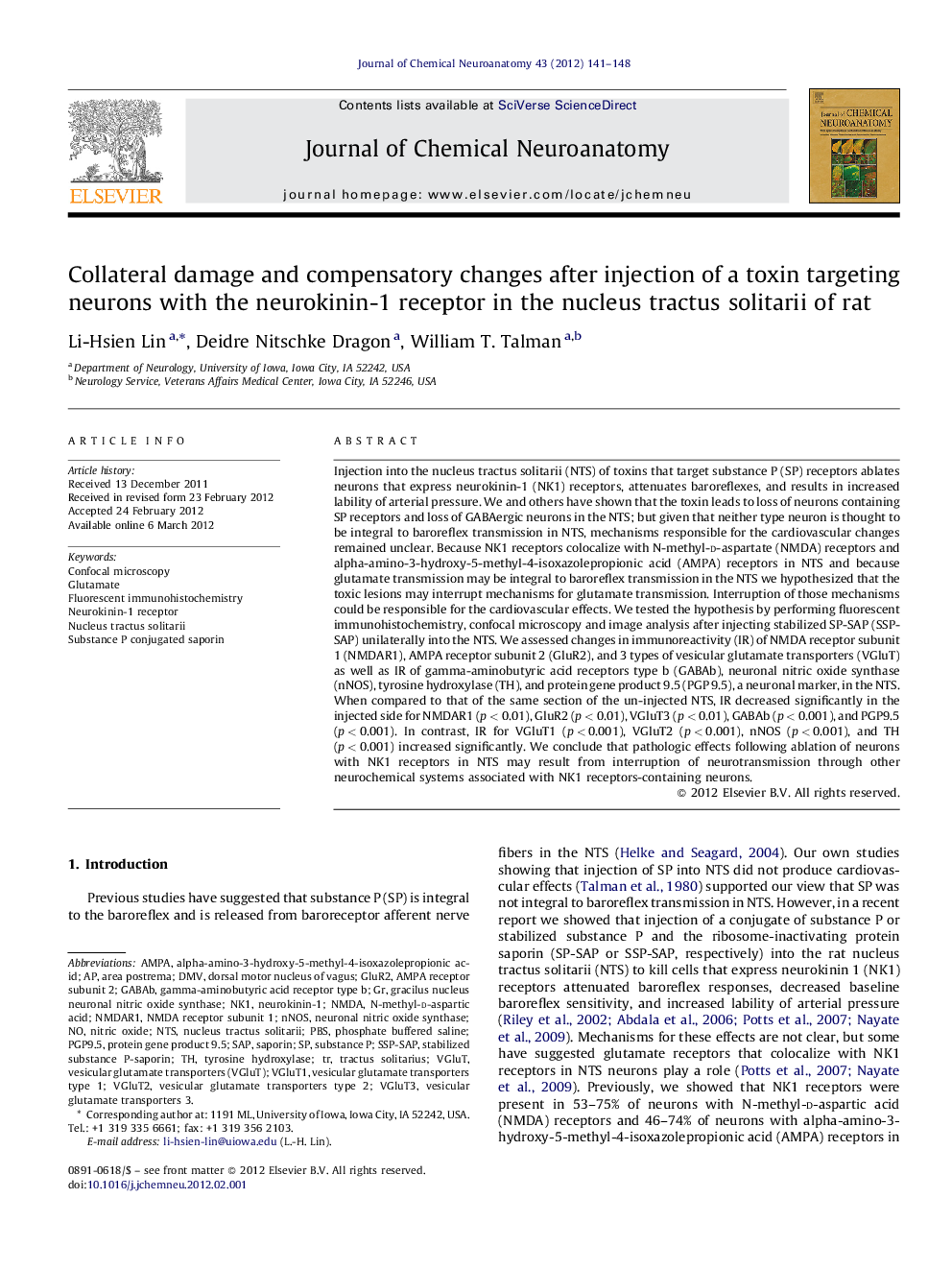| Article ID | Journal | Published Year | Pages | File Type |
|---|---|---|---|---|
| 1988907 | Journal of Chemical Neuroanatomy | 2012 | 8 Pages |
Injection into the nucleus tractus solitarii (NTS) of toxins that target substance P (SP) receptors ablates neurons that express neurokinin-1 (NK1) receptors, attenuates baroreflexes, and results in increased lability of arterial pressure. We and others have shown that the toxin leads to loss of neurons containing SP receptors and loss of GABAergic neurons in the NTS; but given that neither type neuron is thought to be integral to baroreflex transmission in NTS, mechanisms responsible for the cardiovascular changes remained unclear. Because NK1 receptors colocalize with N-methyl-d-aspartate (NMDA) receptors and alpha-amino-3-hydroxy-5-methyl-4-isoxazolepropionic acid (AMPA) receptors in NTS and because glutamate transmission may be integral to baroreflex transmission in the NTS we hypothesized that the toxic lesions may interrupt mechanisms for glutamate transmission. Interruption of those mechanisms could be responsible for the cardiovascular effects. We tested the hypothesis by performing fluorescent immunohistochemistry, confocal microscopy and image analysis after injecting stabilized SP-SAP (SSP-SAP) unilaterally into the NTS. We assessed changes in immunoreactivity (IR) of NMDA receptor subunit 1 (NMDAR1), AMPA receptor subunit 2 (GluR2), and 3 types of vesicular glutamate transporters (VGluT) as well as IR of gamma-aminobutyric acid receptors type b (GABAb), neuronal nitric oxide synthase (nNOS), tyrosine hydroxylase (TH), and protein gene product 9.5 (PGP 9.5), a neuronal marker, in the NTS. When compared to that of the same section of the un-injected NTS, IR decreased significantly in the injected side for NMDAR1 (p < 0.01), GluR2 (p < 0.01), VGluT3 (p < 0.01), GABAb (p < 0.001), and PGP9.5 (p < 0.001). In contrast, IR for VGluT1 (p < 0.001), VGluT2 (p < 0.001), nNOS (p < 0.001), and TH (p < 0.001) increased significantly. We conclude that pathologic effects following ablation of neurons with NK1 receptors in NTS may result from interruption of neurotransmission through other neurochemical systems associated with NK1 receptors-containing neurons.
► SSP-SAP decreases NMDA receptors and AMPA receptors in the NTS. ► SSP-SAP decreases VGluT3 but increases VGluT1 and VGluT2 in the NTS. ► SSP-SAP decreases GABAb receptors and neuronal marker PGP9.5 in the NTS. ► SSP-SAP increases TH and nNOS in the NTS.
